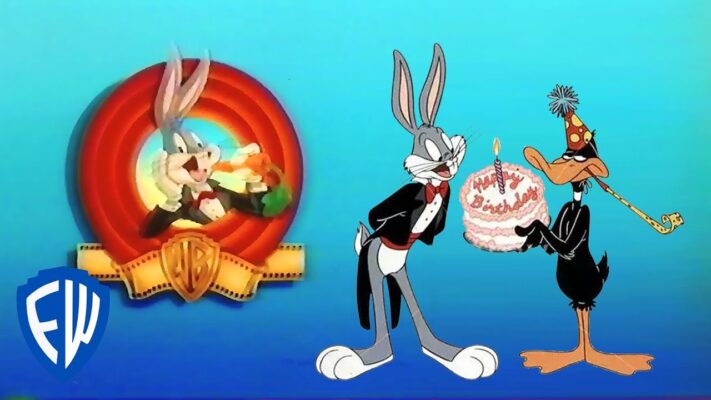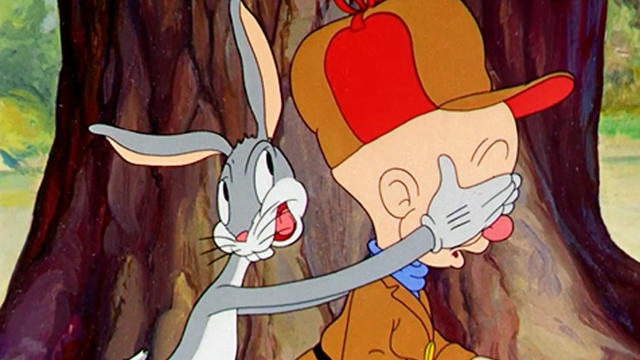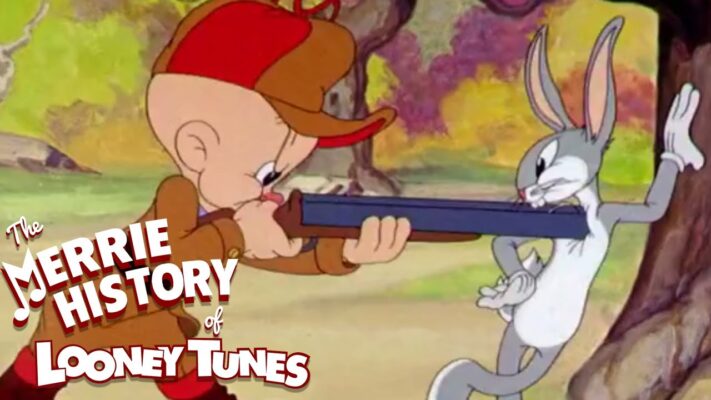Movie News
When Was Bugs Bunny Born?
Bugs Bunny, the iconic animated rabbit known for his clever catchphrases and mischievous antics, is one of the most beloved characters in the world of animation. But when was bugs bunny born? Let’s find out about this topic with Alibaytoon.
When Was Bugs Bunny Born?
Bugs Bunny’s official debut is widely recognized as July 27, 1940. He first appeared in a cartoon short titled A Wild Hare, directed by Tex Avery and produced by Warner Bros. This date is often considered Bugs Bunny’s “birthday” because it marks the first time the character displayed the familiar traits that would become his signature, including his famous phrase, “Eh, what’s up, Doc?”

The Early Development of Bugs Bunny
Before his official debut in 1940, Bugs Bunny went through several iterations and developments, evolving from a simple, unrefined rabbit character to the confident, wisecracking trickster we know today. The creation of Bugs Bunny was a collaborative effort between several key figures at Warner Bros., each contributing unique elements that shaped the character’s persona. Animators like Tex Avery, Chuck Jones, and Friz Freleng played crucial roles in refining his appearance and personality, while the legendary voice actor Mel Blanc provided the unforgettable voice that brought Bugs to life.

In the late 1930s, Warner Bros. animation was still in its formative years, producing cartoons under the Merrie Melodies and Looney Tunes banners. During this period, they experimented with various anthropomorphic animal characters, including early versions of a rabbit that would eventually become Bugs. These early iterations were inconsistent, portraying the rabbit as more of a generic, nameless character without much personality or a clear identity. However, the seeds of Bugs’ mischievous nature were already present, as these early cartoons often featured the rabbit outwitting or escaping from human adversaries.
One significant precursor to Bugs Bunny’s character appeared in the 1938 cartoon Porky’s Hare Hunt, in which a prototype rabbit antagonizes Porky Pig. Although this rabbit lacked the charm and sophistication of Bugs, it showcased the basic concept of a fast, clever, and elusive character that would later define Bugs Bunny. The rabbit was hyperactive and far less composed than the Bugs we know today, but the groundwork for his personality—particularly his tendency to turn the tables on those pursuing him—was already being laid.
It wasn’t until 1940, with the release of A Wild Hare, directed by Tex Avery, that the fully realized version of Bugs Bunny made his official debut. This short was the turning point for the character. In A Wild Hare, Bugs was depicted as a calm, collected, and fast-talking rabbit, a major departure from the earlier, more frantic versions. The film introduced several key elements that would become Bugs Bunny trademarks: his Brooklyn accent, his penchant for chewing on a carrot, and his iconic catchphrase, “Eh, what’s up, Doc?” This version of Bugs also marked the beginning of his long-standing rivalry with Elmer Fudd, who played the role of the bumbling hunter endlessly frustrated by Bugs’ clever antics.
Tex Avery’s direction in A Wild Hare gave Bugs Bunny a more sophisticated and laid-back personality, positioning him as the clever hero who always stays one step ahead of his adversaries. Bugs was no longer just another cartoon animal; he had evolved into a fully formed character with a sharp wit, a cool demeanor, and a mischievous streak. His ability to remain calm under pressure, combined with his sharp tongue and comedic timing, made him instantly appealing to audiences.
Mel Blanc’s contribution to Bugs Bunny’s character cannot be overstated. His voice work gave Bugs the distinctive blend of street smarts and charm that helped elevate the character above his cartoon peers. Blanc’s vocal performance, particularly Bugs’ characteristic nonchalance and humorous delivery, became a defining feature of the rabbit’s persona. Blanc himself credited the voice of Bugs as a mixture of a Brooklyn and Bronx accent, which gave the character his unique vocal identity and helped cement his place as one of the most iconic animated characters in history.
By the time A Wild Hare was released, Bugs Bunny was fully realized as the confident, quick-witted rabbit who outsmarts his foes with ease. The character’s development from a nameless, erratic rabbit into a polished, iconic figure was the result of years of creative evolution, with contributions from some of the most talented animators and voice actors of the era. This collaborative effort laid the foundation for Bugs Bunny’s enduring legacy, ensuring his place as a beloved cultural icon for generations to come.
With A Wild Hare, Bugs Bunny didn’t just debut as a cartoon character—he was born as a symbol of resilience, humor, and cleverness, characteristics that would define him for decades. From this point on, Bugs Bunny would go on to star in countless cartoons, feature films, and TV shows, always with the same charm and ingenuity that made him an instant success.
Bugs Bunny’s Cultural Impact
Since his debut in 1940, Bugs Bunny has become more than just an animated character. He has grown into a cultural icon, starring in numerous Looney Tunes and Merrie Melodies cartoons, feature films, and TV series. Bugs Bunny’s humorous and laid-back personality, combined with his ability to outwit almost any opponent, has made him one of the most recognizable cartoon characters in the world.

Over the decades, Bugs has appeared alongside a host of memorable characters, including Daffy Duck, Porky Pig, and, of course, his on-screen nemesis, Elmer Fudd. His witty banter, clever disguises, and resourceful tricks have kept audiences entertained for generations.
Bugs Bunny’s Legacy
Bugs Bunny’s legacy continues to thrive, with his influence spanning across various media platforms. He has appeared in movies like Space Jam (1996) and Space Jam: A New Legacy (2021), alongside real-life basketball legends like Michael Jordan and LeBron James. His ability to transcend the confines of animated shorts and become a pop culture phenomenon speaks to his timeless appeal.

Beyond the big screen, Bugs Bunny has maintained a significant presence on television. The Looney Tunes Show (2011-2014) reintroduced Bugs in a contemporary setting, blending classic humor with modern storytelling. This series allowed Bugs to interact with new characters and explore different facets of his personality, keeping him relevant and engaging for a new audience. Bugs’ enduring popularity has also led to various spin-offs and special episodes that highlight his adventures and charisma.
Bugs Bunny’s influence extends into comic books, where he has been featured in numerous series and adaptations over the years. His comic book appearances often reflect the same witty and clever nature that defines him in animation, allowing fans to enjoy his antics in a different format. Additionally, Bugs Bunny’s image and catchphrases have been used in merchandise, from toys to clothing, further embedding him into popular culture.
As fans celebrate Bugs Bunny’s “birth” on July 27, 1940, they also recognize the immense impact this animated rabbit has had on the world of entertainment. From his sharp wit to his adventurous spirit, Bugs Bunny remains a beloved figure for both old and new generations.
A Timeless Character
In conclusion, Bugs Bunny was “born” on July 27, 1940, with his official debut in A Wild Hare. Over the years, he has evolved into one of the most iconic animated characters of all time, entertaining audiences with his charm, wit, and clever escapades. Bugs Bunny’s influence on popular culture is undeniable, and his legacy as a timeless character continues to live on.
If you’re a fan of Bugs Bunny, be sure to check out the exclusive Bugs Bunny T-shirts available at Alibaytoon Store!
